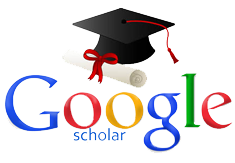Pengaruh Model Talking Chips (Kancing Gemerincing) terhadap Hasil Belajar Peserta Didik Kelas IV pada Subtema Indahnya Keragaman Budaya Negeriku
DOI:
https://doi.org/10.31004/jpdk.v4i6.8138Abstract
Penelitian ini bertujuan untuk mengetahui pengaruh dari model talking chips (kancing gemerincing) terhadap hasil belajar peserta didik kelas IV pada subtema indahnya keragaman budaya negeriku. Penelitian ini menggunakan jenis penelitian quasi experimental tipe control group pretest-posttest design. Populasi dalam penelitian ini yaitu peserta didik kelas I – VI SD Negeri 7 Banyuasin I. Sampel yang digunakan dalam penelitian ini yaitu sampling purposive dimana sampel yang digunakan yaitu peserta didik kelas IV yang terdiri dari kelas IV.A (kelas kontrol) sejumlah 30 peserta didik dan kelas IV.B (kelas eksperimen) sejumlah 30 peserta didik. Teknik pengumpulan data menggunakan Tes. Dari hasil perhitungan diperoleh rata-rata nilai pretest kelas eksperimen = 41,2 sedangkan rata-rata nilai pretest kelas kontrol = 38,3. Untuk rata-rata nilai posttest kelas eksperimen = 72 sedangkan rata-rata nilai posttest kelas kontrol = 58,17. Sedangkan melalui uji hipotesis didapatkan = 4,31 dan = 2,002 dengan taraf signifikan 0,05. Karena maka ditolak dan diterima, artinya ada pengaruh model talking chips (kancing gemerincing) terhadap hasil belajar peserta didik kelas IV pada subtema indahnya keragaman budaya negeriku.Downloads
Published
2022-11-01
How to Cite
Fitricia, S. ., Imansyah, F. ., & Syaflin, S. L. . (2022). Pengaruh Model Talking Chips (Kancing Gemerincing) terhadap Hasil Belajar Peserta Didik Kelas IV pada Subtema Indahnya Keragaman Budaya Negeriku. Jurnal Pendidikan Dan Konseling (JPDK), 4(6), 245–251. https://doi.org/10.31004/jpdk.v4i6.8138
Issue
Section
Articles
License
Copyright (c) 2022 Shelly Fitricia, Farizal Imansyah, Sylvia Lara Syaflin

This work is licensed under a Creative Commons Attribution-ShareAlike 4.0 International License.
Authors retain copyright and grant the journal right of first publication with the work simultaneously licensed under a Creative Commons Attribution-ShareAlike 4.0 International License that allows others to share the work with an acknowledgement of the works authorship and initial publication in this journal. Authors are able to enter into separate, additional contractual arrangements for the non-exclusive distribution of the journals published version of the work (e.g., post it to an institutional repository or publish it in a book), with an acknowledgement of its initial publication in this journal. Authors are permitted and encouraged to post their work online (e.g., in institutional repositories or on their website) prior to and during the submission process, as it can lead to productive exchanges, as well as earlier and greater citation of published work (See The Effect of Open Access).
.png)













